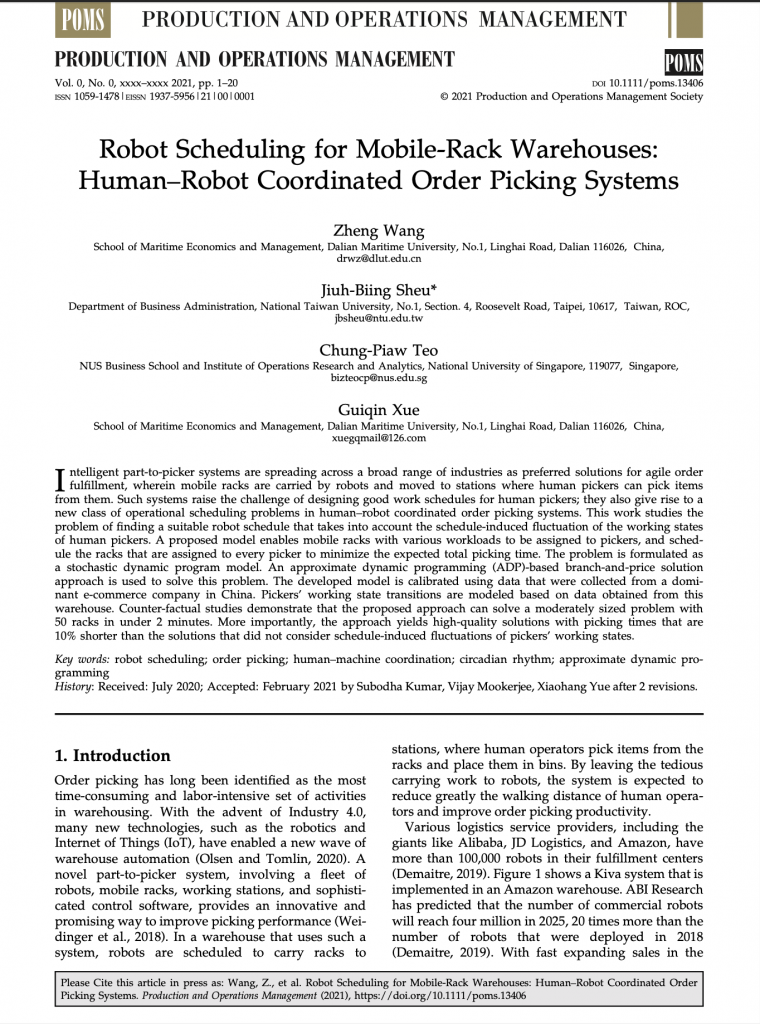Intelligent part-to-picker systems are spreading across a broad range of industries as preferred solutions for agile order fulfillment, wherein mobile racks are carried by robots and moved to stations where human pickers can pick items from them. Such systems raise the challenge of designing good work schedules for human pickers; they also give rise to a new class of operational scheduling problems in human–robot coordinated order picking systems. This work studies the problem of finding a suitable robot schedule that takes into account the schedule-induced fluctuation of the working states of human pickers. A proposed model enables mobile racks with various workloads to be assigned to pickers, and schedule the racks that are assigned to every picker to minimize the expected total picking time. The problem is formulated as a stochastic dynamic program model. An approximate dynamic programming (ADP)-based branch-and-price solution approach is used to solve this problem. The developed model is calibrated using data that were collected from a dominant e-commerce company in China. Pickers’ working state transitions are modeled based on data obtained from this warehouse. Counter-factual studies demonstrate that the proposed approach can solve a moderately sized problem with 50 racks in under 2 minutes. More importantly, the approach yields high-quality solutions with picking times that are 10% shorter than the solutions that did not consider schedule-induced fluctuations of pickers’ working states.

